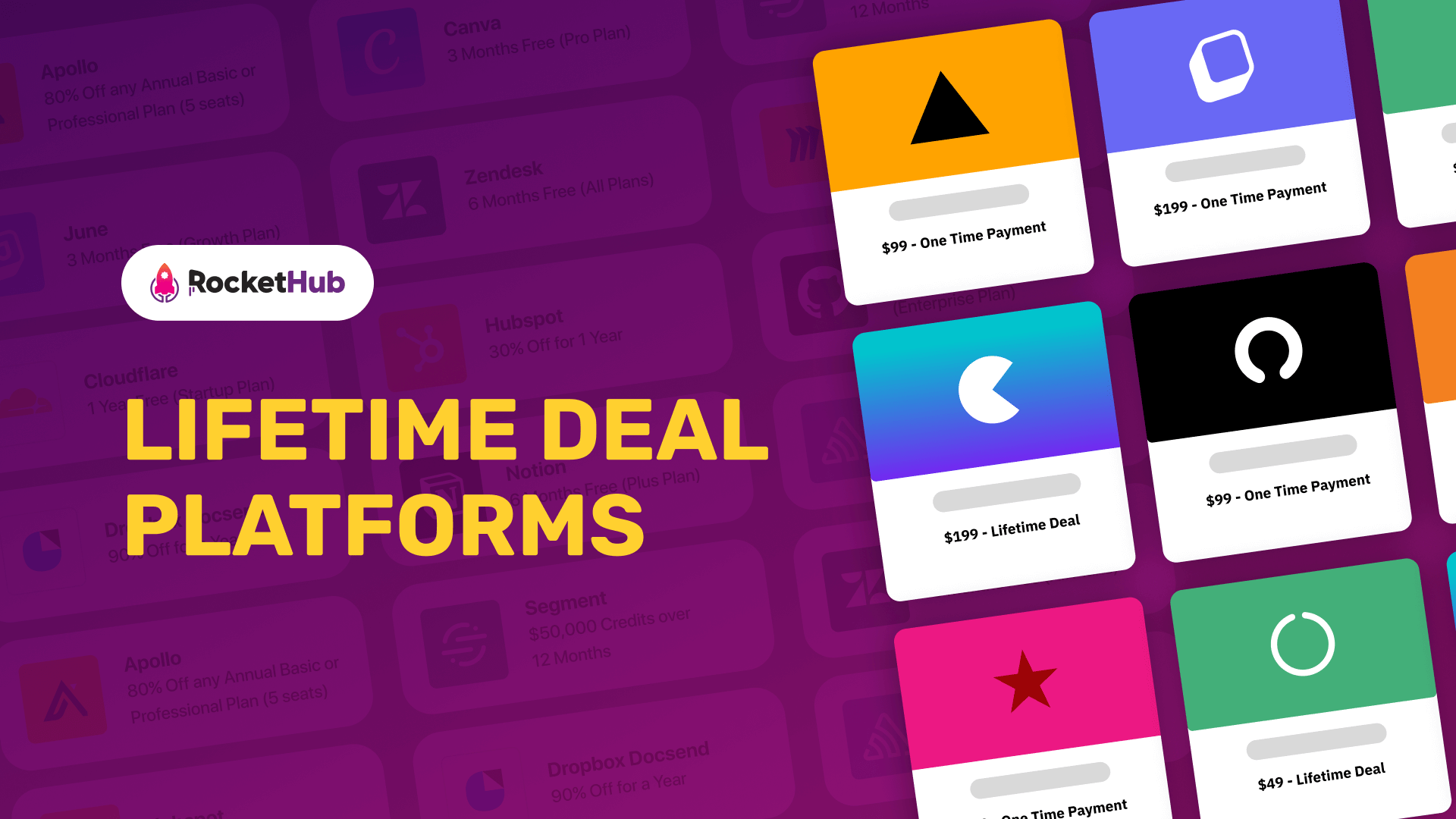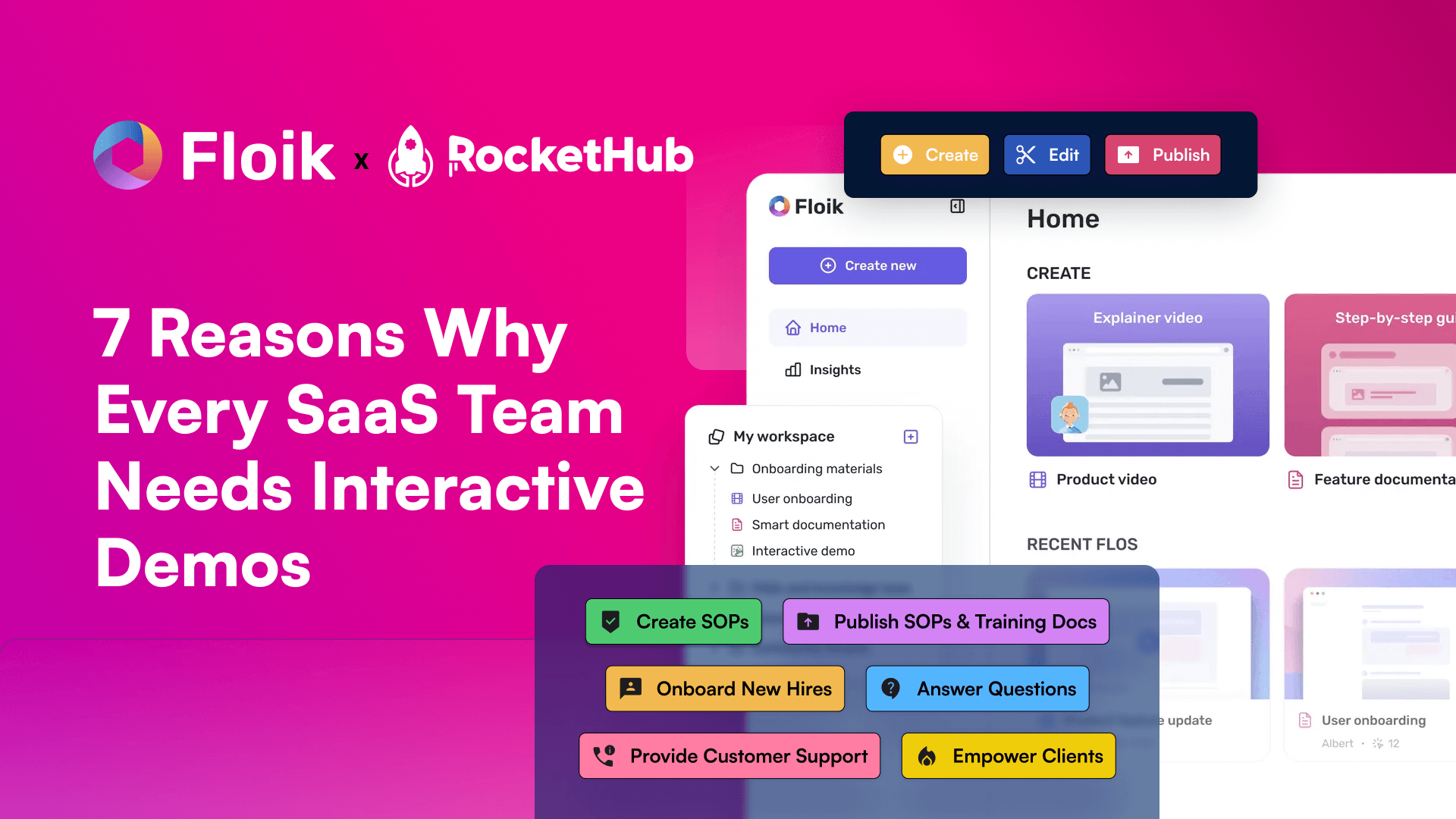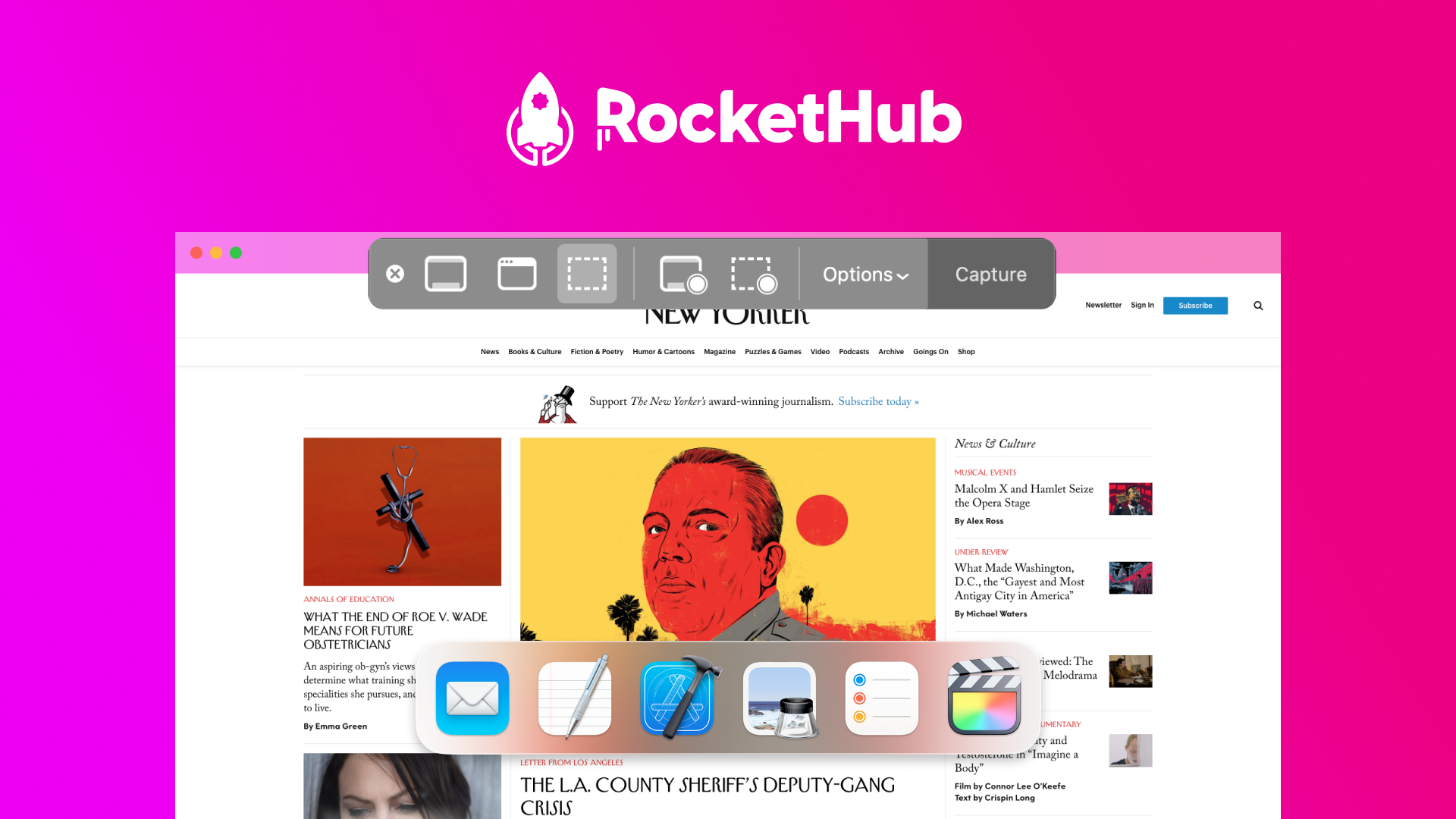
SaaS Content Distribution Strategy
- RocketHub Team
- March 8, 2024

More and more SaaS companies are utilizing content marketing as a strategy to increase traffic and boost their online visibility. However, it doesn’t matter how exceptional or valuable your content is if nobody notices it. This is where the SaaS content distribution strategy comes in. Distributing content across different channels and platforms allows SaaS startups to reach large audiences hungry for information or education on relevant topics. Once you created content, it’s time to get to work and spread the word.
Most of the time, SaaS content distribution focuses on these three main tools to disseminate the content: own, earned, and paid media. What should your content distribution plan look like, and which media offers the best ROI? Let’s dig right in.
Content Distribution Strategy vs Content Marketing
The last few years have seen exponential growth in the content marketing industry. The processes and tools have evolved. SaaS content distribution has become one of the most popular buzzwords of this rapidly expanding online marketplace.
It’s much more than a buzzword, however, and it serves a different purpose than content marketing itself. In essence, it supports and boosts content marketing efforts. Because content distribution ensures the content gets shared, promoted, boosted, and distributed across as many media channels as possible.
Content marketing is the strategy of setting your SaaS product apart from those offered by others in your niche. SaaS content distribution, on the other hand, is the process of disseminating this marketing-related content to targeted and large audiences in order to spread awareness about the brand and the product.
Your SaaS startup could have created a brilliant solution. However, without content marketing, you wouldn’t be able to reach your audience and grow a large, loyal customer base. Without a SaaS content distribution strategy, even the most clever marketing techniques fail to yield results. This is why all new SaaS startups, without exception, need to actively spread the word about their product.
SaaS content distribution strategies and tools help increase traffic, get valuable leads, and increase the number of conversions. The best way to go about content marketing and content distribution is to do these two things:
- Creating content where you offer value to your audience.
- Distributing the content strategically. You maximize the exposure of your content and get it in front of audiences that need it the most.
Developing a SaaS Content Distribution Strategy
Much like content marketing, content distribution needs to be strategic. Instead of improvising and scattering your content all over online platforms without a clear direction or goal, think of some of the most effective ways to distribute your content for maximum results. A good place to start is by asking these questions:
- What sort of content are you creating (blog, video, podcasts, eBooks)?
- How does your audience prefer to consume the content?
- Where does your audience mostly hang out (news sites, other blogs, YouTube, Reddit, LinkedIn, other social media platforms)?
- Which media channels do you have access to?
- What is your budget?
Your SaaS content distribution strategy will depend on the type of content you create and the online spaces where your audience is most likely to consume the content and engage with it. For example, if your go-to is a blog, social media and sites like Medium might be the best ways to distribute the content. If your content is mostly video, YouTube and Vimeo are the places to start. If, on the other hand, your content is newsworthy, online news sites and Twitter may prove to be the most successful channels to spread the word. In addition, think about paid media channels you can utilize, and consider influencer outreach for maximum exposure.
By being strategic with different media channels, you’re making sure your SaaS content distribution efforts are steered in the right direction. You can also make sure that your content targets the right audiences and ensures conversion of leads into long-term customers in turn.
Content Distribution Channels
To start building your SaaS content distribution strategy, first, explore the three main channels where you can share your content. Let’s explore these channels in more detail below.
Earned Media Channels
Getting your content distributed in earned media is a content marketer’s dream come true. Earned media shares are organic, adding credibility and offering authentic exposure.
Earned media can be any of the following:
- Mentions in mainstream media sites
- Mentions or reviews in industry or niche-specific sites
- Online magazines
- Other blogs
- Comments and reviews on social media and other spaces
If people share, review, or comment on your content on a reputable site, you’ve hit gold.
Why? Because earned media channels are often considered to be the most trusted source of information about a company’s product. They are also most likely to prompt a customer into considering a purchase.
Paid Media Channels
Paid media channels are anything from ads to sponsored content, paid influencer outreach, social media ads, and sponsored search results. Using paid media is an excellent way of getting your foot in the door. Especially at the very beginning when getting earned media mentions is tough. However, paid ads and sponsored content is typically viewed more skeptically by audiences than organic mentions. This is why your SaaS content distribution strategy should not solely rely on paid media; instead, it should be just one of the tools in your overall strategy to set things in motion and support other media channels.
Owned Media Channels
To maximize returns on paid media, your ads should always lead back to your owned media. Unlike earned or paid media, owned media is completely in your control. It is not subject to the rules or doings of others. Owned media includes your website, blogs, and social media channels. The core content is, the content attracting your audience to your site. They should only be published on platforms you own as it’s the only way to ensure your content isn’t subject to changing rules. Social media, on the other hand, is a great way to distribute that core content leading back to your website.
SaaS Content Distribution Methods
Three main media channels aside, building your SaaS content distribution strategy means narrowing down even more and figuring out the exact tools and techniques you’re going to use.
Your goal through any good content distribution strategy is to ensure that the product becomes part of the conversation in the marketplace – or, creates a conversation where there is none. There are several effective methods for distributing your content online in order to achieve this goal:
Google Ranking

Google is hands-down the most popular search engine out there. A high Google ranking means increased traffic volume. For sites, pages, and links related to your product to show up at the top of Google searches, it’s crucial to use optimum Search Engine Optimization (SEO) techniques. A higher ranking for your page means it will get more clicks and views. In turn, a higher volume of traffic will be driven to your media channels.
Considering the sheer volume of content that is available on the internet about almost anything nowadays. A good Google ranking will ensure that your content doesn‘t get lost on the web.
Press Release
Hiring a Public Relations (PR) firm can provide your SaaS business invaluable access to a huge variety of content distribution channels. These agencies create press releases, articles, and reports about the product which are disseminated through mainstream media outlets or events. PR agencies team up with newspapers, websites, and other media to create a buzz around the press release. Then, as a SaaS startup with a product to market, that is exactly the kind of exposure you’re looking for.
This is not to say you can’t craft a press release yourself; you can, and you absolutely should if hiring a PR agency is out of your budget. However, the value of a PR firm is its network of contacts and ongoing relationships with journalists and reporters in various media outlets.
Keep in mind that press releases work great in these three momentum:
- You’re launching a new product or service
- Your brand is supporting a large cause
- You are changing your brand name
This channel won’t work if you simply want to promote your regular marketing posts. Your news has to be, well, newsworthy to get any traction in the mainstream media.
Video Marketing
Are you creating video content? No? Then you should start!
Video is the fastest-growing content segment out there, and YouTube is almost as big as Google. If video is part of your content marketing efforts, make sure you’re distributing it on YouTube, Vimeo, Facebook, LinkedIn, and Instagram. If you hit jackpot and your video goes viral, it will instantly elevate the brand and increase your reach and influence both in your industry as well as in the consumer’s mind. Even without viral overnight success, video is an extremely powerful tool to spread the word and boost brand awareness.
Social Media
Social media sites such as Facebook, LinkedIn, Reddit, Twitter, Instagram, and even Pinterest can all be used as extremely effective SaaS content distribution platforms. LinkedIn, considering its wide reach in the business and corporate industry, can be especially beneficial for your social media marketing and distribution efforts. It can help you clearly communicate the goals of your SaaS startup as well as establish your brand as a leader in the industry. Well-researched blog posts and articles can be posted on these social media platforms creating a positive buzz about your product. In addition, groups, especially on Facebook and LinkedIn, are a fantastic space to start a conversation and share your content in an authentic, meaningful way.
Keep in mind that sharing direct links to your blog posts or videos isn’t the best way when it comes to social media. The goal of the social media platforms is for users to create content on the platform, not outside it, and if you simply post direct links, this won’t get you much traction. Instead, craft content that is specific to each social media platform then add a CTA for audiences to find your owned media content off the social media site.
Email Marketing
Email marketing is a direct method of sharing information and updates about your business. Emails that are engaging, exciting, and informational can spark interest and generate curiosity in the minds of your consumers. The “engaging and exciting“ part is key, however: if you’re sending out boring, tedious emails sharing boring, tedious content, you’ll soon see unsubscribe numbers go through the roof. Much like your core content, your email content needs to offer value instead.
Influencer Outreach
Influencers are viewed as experts in their respective industries or niches. They have a huge impact on their readership and followers on social media platforms. They are often regarded as authorities on the subject matter, and a positive word on your content from an influencer could boost your own audience and followers significantly. Influencer marketing isn’t free – typically, influencers will expect compensation for promoting your content – but it’s one of the most effective ways to distribute content in a way that appears more authentic and genuine than paid ads.
Final Thoughts on SaaS Content Distribution Strategy
An effective SaaS content distribution strategy can generate a buzz around your content and in turn, your business and the value your product offers. As a supporting pillar to your overall content marketing strategy, content distribution techniques are essential to make sure your content gets seen, consumed, and shared. Take a good look at your existing content, evaluate how your audiences consume content and where they are most likely to hang out, and come up with a killer content distribution plan to gain as much exposure as humanly possible. The good news is, content distribution can have a compounding effect: once you gain that initial traction with some paid and earned media, shares, reviews, and links will increase exponentially as you go along.
What is your #1 nemesis when it comes to content distribution? Let us know in the comments below!
Share This Post
RocketHub Team
The launch crew at RocketHub writes about startup and SaaS growth. Be a fellow Rocketeer and show some love by commenting below with your thoughts on our content.
Table of Contents
Get The Latest Updates
Subscribe To Our Weekly Newsletter
Sign up below to be one of the first crew members onboard and get early access to amazing deals.
Recent Posts


Social Media
Categories
Related Posts

Lifetime Deal Platforms
The best lifetime deal platforms for software. Platforms lik RocketHub scour the web for the highest quality products to bring buyers the best lifetime deals on their platform.

How to Work for Yourself + 13 Solo Business Ideas
Do you ever wonder if being your own boss could truly set you free? In this article, we’ll explore the theory that unleashing entrepreneurial freedom

7 Reasons Why Every SaaS Team Needs Interactive Demos
Making a Case for Interactive Demos: 7 Reasons Why Every SaaS Team Needs Them Let me paint a scenario for you. You want to buy


